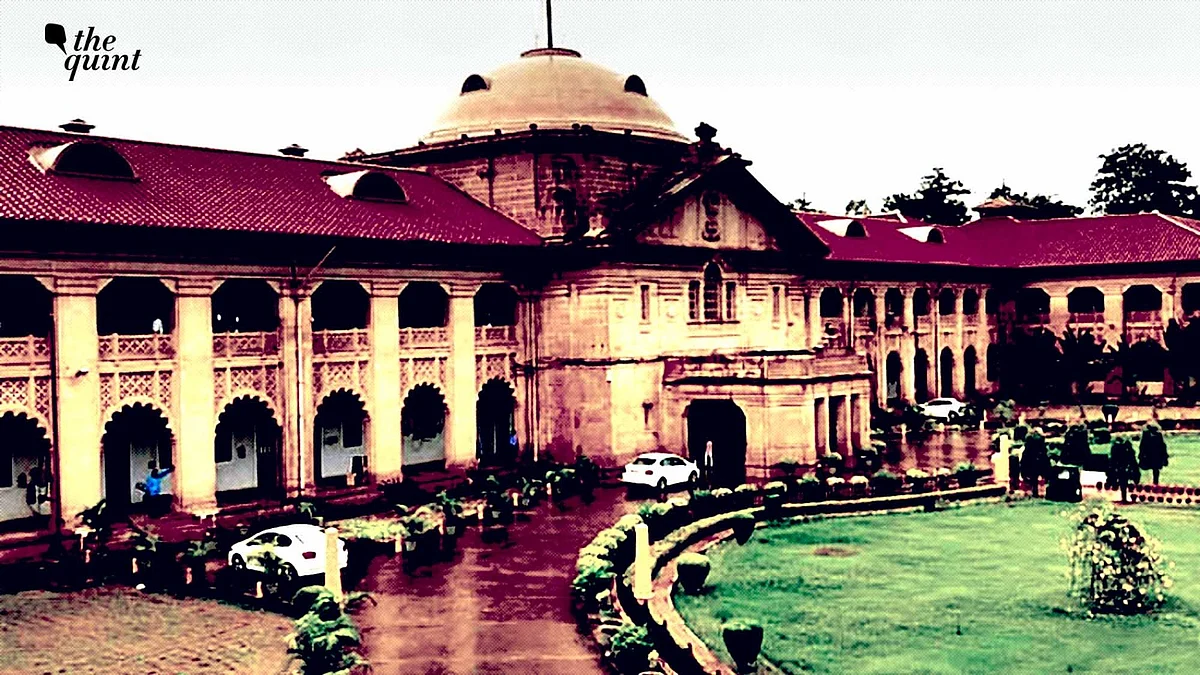‘Stuck in Time’: How Outdated Systems are Burdening the Allahabad High Court
Allahabad High Court's reliance on old systems contrasts sharply with Delhi's modern court amenities and technology.

advertisement
Established in the year 1866 as the High Court of Judicature for the North-Western Provinces, the Allahabad High Court is the last chartered High Court in India. It was among a few courts, such as the Madras High Court, Calcutta High Court, and the Bombay High Court established by the British under a charter. These High Courts usually have higher jurisdiction over civil and criminal matters compared to lower courts.
For comparison, let’s consider the Delhi High Court established in the year 1966. There are drastic differences between the two high courts although both of them hold the same charge of a constitutional court. These differences can be viewed just by looking at the basic amenities which are necessary for the functioning of a court.
Rock, Paper, Starbucks, Scissors
You can tell the difference between the two courts, simply by looking at how people in the court are satiating their thirst.
For instance, the Delhi High Court has basic facilities like a functioning water cooler and a medical desk. The metropolitan spirit of the capital can be felt just by one look around the canteen and the various amenities Delhi High Court offers its lawyers. One can find a fancy Starbucks coffee cup just about gliding its way through the corridors of the court
At the Allahabad High Court, you will find an old lady with a bundle of bottles, serving free tap water to everyone.
(Photo: Yash Giri)
Lacking basic drinking facilities is not the only area where the fourth oldest court is underperforming. The difference extends to even the basic administrative details; for instance, the Allahabad High Court mandates legal-sized paper for filings, while the Delhi High Court uses A4-sized paper.
(Photo: Yash Giri)
As the country is set to witness yet another glaring summer, the court in the Sangam city will rely yet again on the historic ventilation system, with large fans hanging down and moving in a slow clockwise fashion. Whereas in the national capital, the AC blasts full power often compelling the lawyers to leave the courtroom and walk outside to bring their body back to normal temperature.
Litigants are required to submit at least three sets of paper books over the counter to get a case listed—an outdated and paper-intensive system which not only increases the work of the administrative staff but is also worsening the environment.
Technical Hang-ups, Functional Gaps
Another glaring contrast is the stark difference in functioning of the two courts.
In contrast, the Delhi High Court boasts of cutting-edge video conferencing facilities in all court rooms including the registrars' courts. It is a common sight to see lawyers equipped with iPads in Delhi’s courts where even the judges refer to the PDF's page numbers, while in Allahabad, judges often take offence if counsel appears at the podium without a physical file in hand.
(Photo: Yash Giri)
The idea of technology is often weighed down in the Allahabad High Court as one can see piles of files just seated in the corridors. It is true that one can only learn from the past but being in the past can withhold the growth of the institution and the society. It is a common sight in the Allahabad High Court where people can be seen carrying files on their shoulder and in trollies which is rather a rare sight to be seen in the corridors of Delhi High Court.
Who is Impacted, Litigant or Bar?
These material differences are affecting the bar more than the litigants. But what is actually affecting the functioning of the court is the understaffing of the judicial staff which further exacerbates the already strained system.
As a result of this, a single judge handling criminal matters may be burdened with around 200 fresh bail or anticipatory bail applications daily, in addition to 150 regular cases. The registry is overwhelmed, with lawyers often shouting for their matters to be listed more quickly, adding to the chaos.
The question of how much the Indian government should intervene in these issues remains contentious, considering the need for judicial independence. Though one might be tempted to blame the current government for the situation, advocates — both junior and senior at the Allahabad High Court often pause to reflect on a system stuck in time, waiting for a solution from all stakeholders, including the state government and the bar.
(Yash Giri is a criminal lawyer practising in the Supreme Court, Delhi High Court, and the Allahabad High Court. He can be found on Twitter and Instagram at @Yash_Giri23. This is an opinion piece and the views expressed above are the author’s own. The Quint neither endorses nor is responsible for the same.)